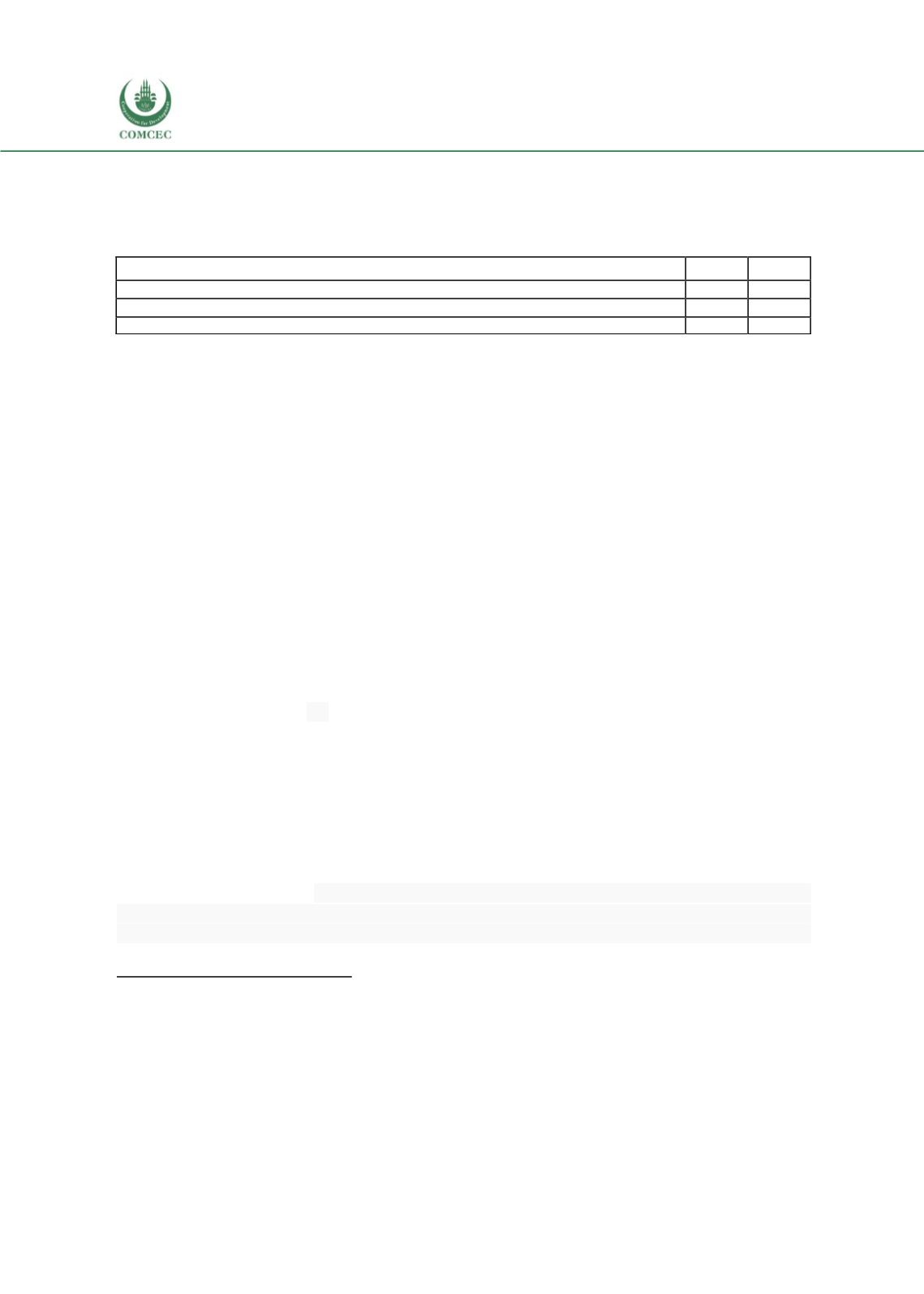

Increasing the Resilience of the Food Systems
In Islamic States in Face of Future Food Crises
122
In 2011, the government established the Research Council of Oman (TRC) as an independent
entity to support Oman’s research initiatives in agricultural and non-agricultural sectors. The
Council runs an animal and plant genetic research centre as well as multiple grant programs
499
.
Table 64: Key agricultural research indicators in Oman, 2009-2012
500
Oman has focused on improving knowledge and skills of students in agricultural sciences to
drive food sustainability. The College of Agricultural and Marine Sciences (CAMS) at Sultan
Qaboos University offers
nine undergraduate and eight postgraduate programs
focused on the
efficient use of natural resources for food production and conservation to ensure food security.
The programs offered by the college of Agricultural and Marine Sciences include: animal and
veterinary sciences, crop sciences, food science and nutrition, marine science and fisheries,
natural resource economics, soils, water and agricultural engineering.
501
The Ministry of Agriculture and Fisheries in collaboration with the Ministry of Education h as
also launched the “My School Producer” project, in which more than 5,500 school students
across Oman will be trained in agricultural and fisheries specialties. This project is alignedwith
Oman’s initiatives to help develop a strong workforce for the agricultural and related sectors in
years to come. The project also targets vegetable production and fish farming in fresh water. In
the context of the project, training and mentoring programs are also provided to school
teachers.
502
In 2016, Sohar University was given a $500,000 grant from UK’s University of Sheffield to
develop greenhouse prototypes and use
solar energy to desalinate water that would later be
used for growing produce
503
.
Cooperation
FAO has supported Oman in enhancing agricultural and fisheries productivity as well as in
sustainablemanagement of natural resources. Between 2013 and 2017 FAOconducted studies
and technical missions worth $1.4 million to give counsel to the Supreme Council on its
Sustainable Agriculture and Rural Development Strategy 2040.
During the same time period, theMinistry of Agriculture and Fisheries alongsidetheWorld Bank
published the
Sustainable Management of the Fisheries Sector
program in Oman to drive the
fisheries sector towards sustainability. In 2012, the Ministry of Agriculture and Fisheries and
Dubai’s (UAE) International Centre for Biosaline Agriculture published the Oman Salinity
499
“Growing green strategic investments to boostself-sufficiency and exports”. Oxford Business Group, 2018.
https://oxfordbusinessgroup.com/overview/growing-green-strategic-investments-promising-sector-boost-self-sufficiency-and-exports
500
CGIAR website.
https://www.asti.cgiar.org/pdf/factsheets/Oman-Factsheet.pdf501
SQU website.
https://www.squ.edu.om/agr/Departments502
“Project to train over 5,500 students in agri-fish production”. Muscat Daily, 2018.
https://muscatdaily.com/Archive/Oman/Project-to-train-over-5-500-students-in-agri-fish-production-5e1w503
Growing green strategic investments to boostself-sufficiency and exports”. Oxford Business Group, 2018.
https://oxfordbusinessgroup.com/overview/growing-green-strategic-investments-promising-sector-boost-self-sufficiency-and-exports
2009
2012
Public Agricultural Research Spending (Omani Rial, million, constant 2005 prices)
11.0
13.1
Research Spending as share of agricultural GDP
4.99%
6.51%
FTE (full-time equivalent) researchers per 100,000 farmers
63.80
63.60
















